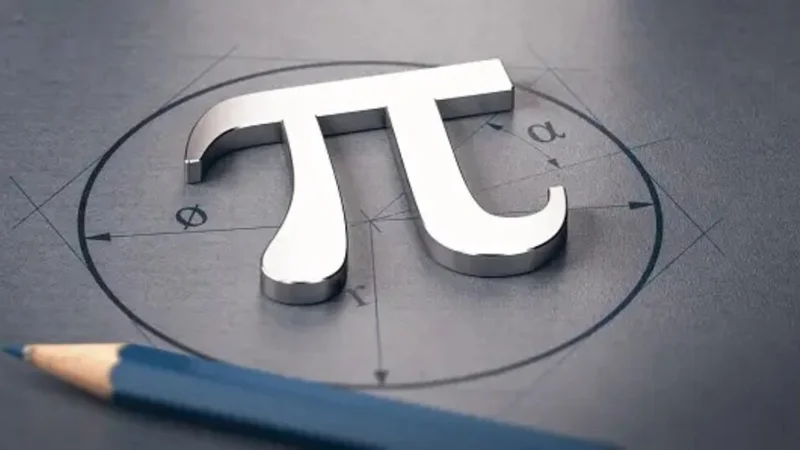Pi Network: Value Speculation vs. Testnet Reality
Generated Title: Pi Network's Big Play: Is ISO 20022 a Game-Changer or Just Noise?
There's a specific kind of signal in financial markets that always gets my attention. It’s not a price chart or an earnings report. It’s the moment a project with a grassroots, almost mythical reputation suddenly starts speaking the language of the global banking establishment. This week, that signal flashed brightly from Pi Network.
The report, covered in articles like Pi Coin News: Pi Network Joins ISO 20022 Group with Ripple and Stellar, is that Pi, the mobile-mining crypto phenomenon with a colossal user base, has joined the ISO 20022 standards group. This places it, at least in name, alongside institutional heavyweights like Ripple (XRP) and Stellar (XLM). For the uninitiated, ISO 20022 is the emerging global standard for financial messaging—the very grammar that banks will use to communicate transactions. It’s the digital equivalent of moving out of a garage workshop and leasing an office on Wall Street.
Naturally, the market reacted. The PI token, which trades as an IOU on a handful of exchanges pending an open mainnet, saw a significant price spike. But the immediate question for any sober analyst isn't if this is good news, but what the news actually represents. Is this a substantive technological integration that fundamentally changes Pi’s trajectory, or is it a brilliantly timed piece of narrative engineering designed to galvanize a community and fuel speculation?
The data, as always, suggests a more complicated picture.
The Anatomy of a Narrative-Driven Rally
Let's first look at the numbers. In the immediate aftermath of the news, Pi’s price jumped—sources report a daily gain somewhere between 5% and 16%, a discrepancy that itself points to the token’s thin liquidity and high volatility. At the time of this writing, the price is hovering around $0.26, pushing against its 50-day Exponential Moving Average (EMA). For technicians, this level is a critical battleground; it has repeatedly acted as a point of bearish reversal in the past. A decisive close above it would signal a potential shift in momentum.
But technicals only tell part of the story. This rally isn’t rooted in a product launch or a surge in on-chain activity. It's pegged almost entirely to the ISO 20022 association. This is what we call a narrative-driven rally. The value isn't derived from present utility but from the perceived probability of future utility.

Aligning with ISO 20022 is like an aspiring architect showing you a stunning, photorealistic blueprint for a skyscraper. It demonstrates vision, competence, and a clear plan. It might even secure you early investors. But it doesn't change the fact that, for now, the plot of land is still empty. The announcement sets a target for full alignment by November 22, 2025. That’s a long way off, with countless execution risks between now and then. What are the concrete steps being taken, and what does the project's current state tell us about its ability to meet that deadline?
Testnet Promises vs. Mainnet Reality
This brings us to the core discrepancy in the Pi Network story. While the project talks about global financial standards, its most advanced features are still cordoned off in a testing environment. The recent deployment of a Decentralized Exchange (DEX), Automated Market Maker (AMM) functionality, and token creation tools happened exclusively on the Pi Testnet.
This is a critical distinction that often gets lost in the hype cycle. A Testnet is a sandbox. It allows developers and users to experiment without real-world consequences. The "Test-Pi" used for swaps and liquidity pools has no monetary value. Dr. Chengdiao Fan, a Pi Founder, has been clear that the goal is to educate the community and encourage utility-focused development before these powerful tools are unleashed on the Mainnet, where real Pi will be at stake.
I've looked at hundreds of project roadmaps, and this is the part of Pi's strategy that I find genuinely compelling, yet also concerning. On one hand, it’s a responsible, measured approach aimed at preventing the kind of speculative mania that has hollowed out other ecosystems. They are explicitly trying to avoid becoming a memecoin factory. On the other hand, it means the core economic engine of the network remains theoretical.
And what about the users who will power this economy? The project recently announced that System Process Checks Allow Over 3.36 Million Tentatively KYC’d Pioneers to Fully Pass Pi KYC. This is a massive logistical achievement and speaks to the network's scale (the oft-quoted figure is nearly 50 million users). But this brings up a methodological question: What does "user" actually mean here? Is it total accounts created since inception? Or is it a reflection of daily or monthly active participants? The strength of a network isn't just its size, but its engagement. We have a clear number on KYC progress but a much fuzzier picture of the network's active economic participants. Without an open Mainnet, we're essentially modeling the economy of a nation that hasn't opened its borders yet.
A Calculation Missing Its Key Variable
So, is the ISO 20022 news a game-changer or just noise? My analysis suggests it’s neither. It’s a credible statement of intent, not a declaration of victory. It provides a clear, institutional-grade benchmark for the project's ambitions, effectively telling the world it wants to compete for real-world financial traffic, not just crypto speculation. For a project often criticized for its slow, opaque development, this is a significant and necessary step.
However, the current valuation and excitement are based on a future event that is contingent upon immense technical and procedural execution. The entire thesis rests on the Pi Core Team’s ability to migrate its massive, KYC-verified user base from a closed, mobile-centric system to an open, interoperable financial network capable of meeting the stringent requirements of global banking.
The price is a bet on that outcome. The Testnet is the practice field. The ISO 20022 standard is the championship game they hope to one day play in. The plan is on the whiteboard, but the team still has to execute every single play. The most important variable—the open Mainnet—is still an ‘x’ in the equation. Until that variable is solved, we are analyzing the shadow, not the object itself.
Related Articles
Zcash: The Data Behind the Price Surge and What Reddit Gets Wrong
The recent performance of the Zcash coin (ZEC) was, by any quantitative measure, an extreme outlier....
The UK's Pension System Glitch: Why This Critical Flaw Signals a Coming Reboot for Finance
It started, as these things often do, with a whisper. A rumor, carried on the digital wind, that the...
Royal Caribbean Norovirus Outbreak: What the CDC Data Reveals and the Numbers Involved
The latest incident report from Royal Caribbean’s Serenade of the Seas presents a tidy, almost clini...
ChainOpera AI's Explosive Growth: The Secret Behind Its Success and What It Means for the Future
The Price of COAI Isn't the Story. The Revolution Is. Let’s be honest. You’re probably here because...
The Internet's Obsession With Julie Andrews: Why Everyone's Asking If She's Still Alive and What Her Legacy Really Is
So, Julie Andrews is 90. Is Julie Andrews still alive? Yeah, she is, and the internet is currently f...
Juan Gabriel's Immortal Voice: What a Posthumous Album Proves About the "Is He Alive?" Theories
When you first hear it, the feeling is uncanny. A voice you thought was silenced forever, singing a...





